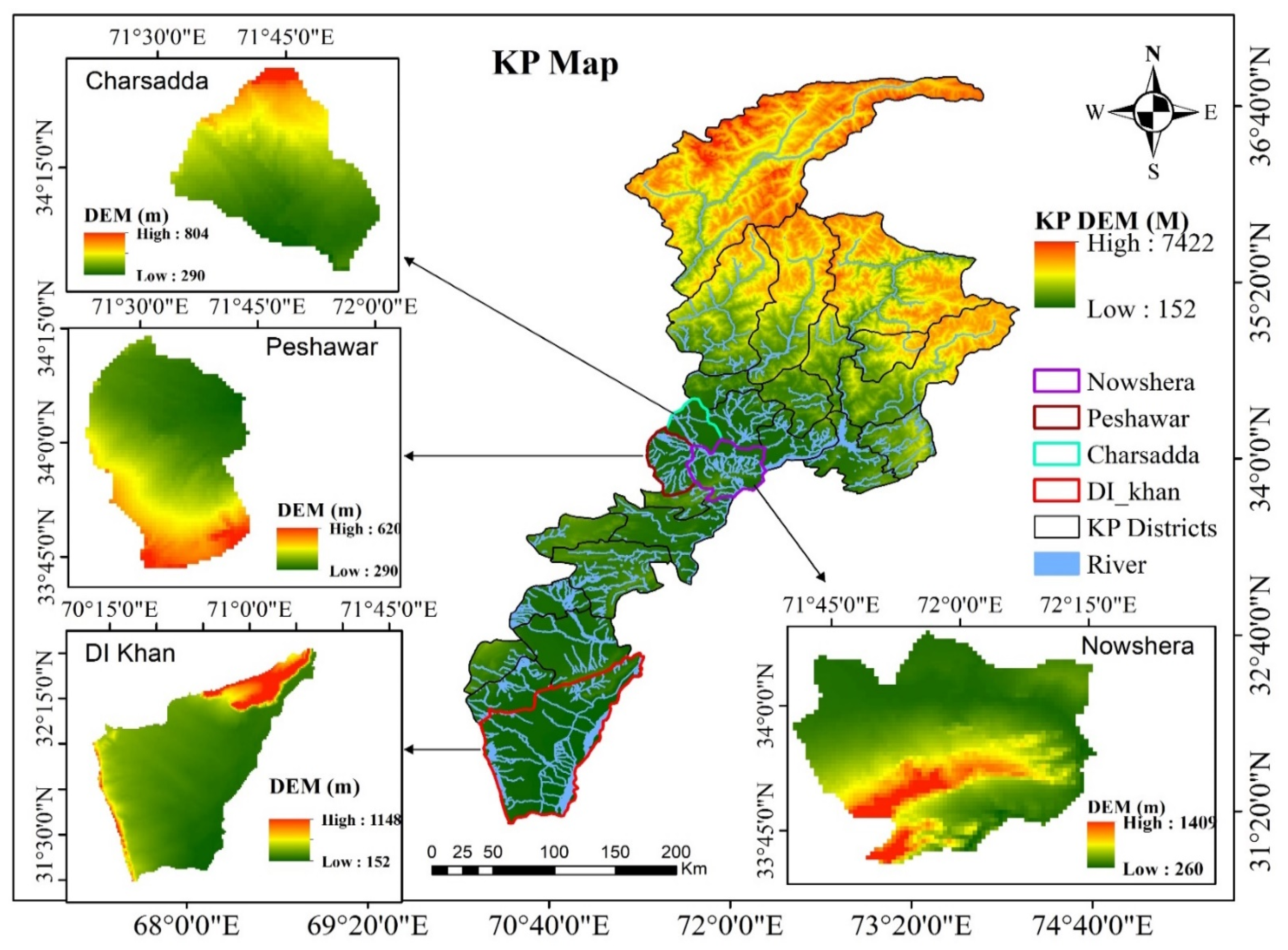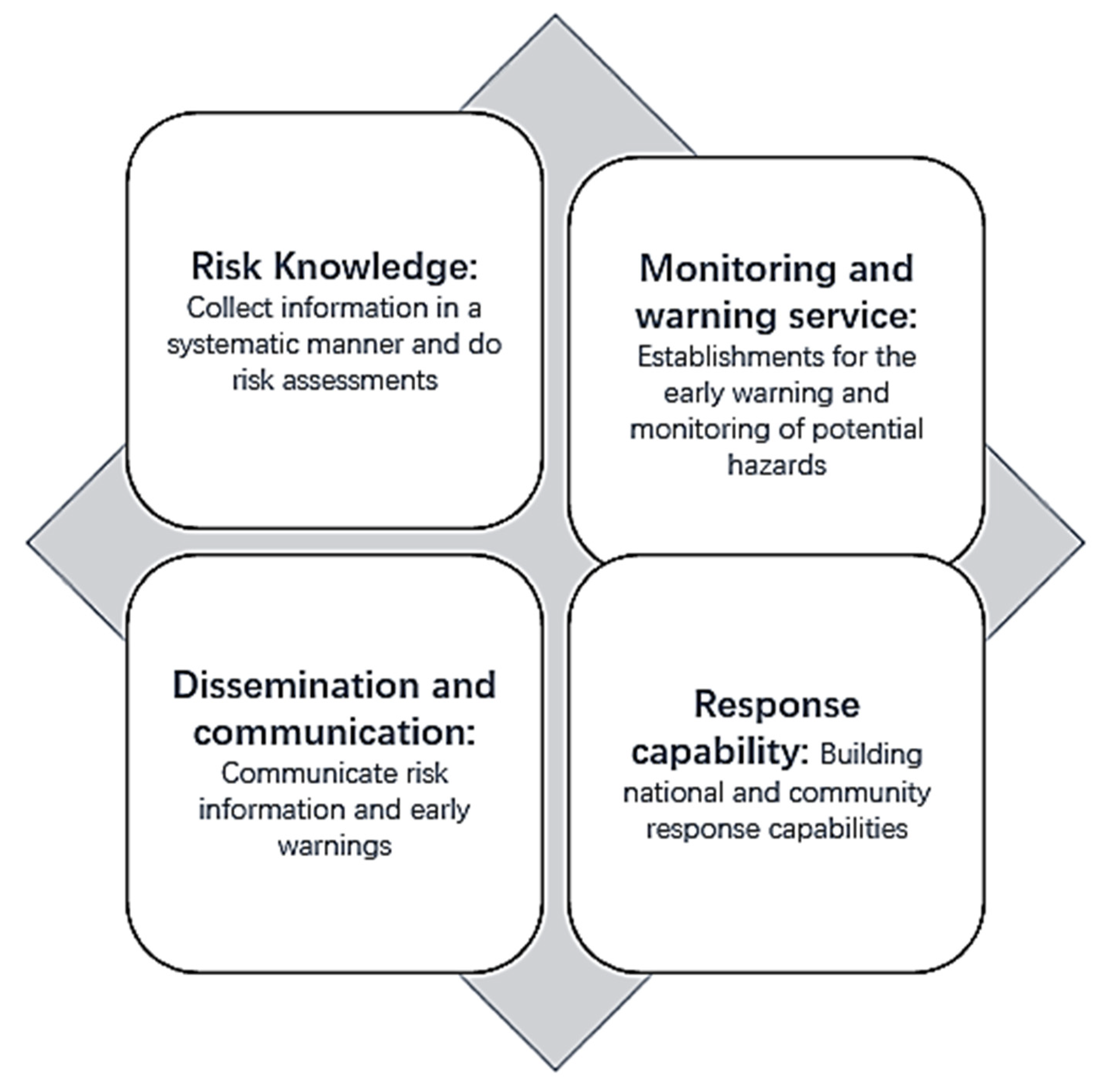Gender Perspective of Flood Early Warning Systems: People-Centered Approach
Abstract
:1. Introduction
2. Coupling Risk Knowledge with Early Warning Systems: Special Reference to Pakistan
3. Research Methodology
3.1. Study Area Description
3.2. Sampling Plan of the Study
4. Results and Discussion
4.1. Risk Knowledge: Using the Gender Lens to Explore the Institutional Analysis of Flood EWS
“The flood hazard ratings along major streams or coastal areas within districts should be more geographically defined, and viable refuge places should be more explicitly listed. These kinds of places where people can seek sanctuary or escape, depending on particular gender function spaces.”
“Funders, humanitarian organizations, and other NGOs put pressure on the organization to include a gender perspective as a symbolic gesture.”
“That is not what we say: women and children ought not to be informed of what would transpire during a flood. However, they must be trained on how to defend themselves and their children to help their husbands and reduce their burden. This raises the chances of saving more people, property, and cattle.”
4.2. Monitoring and Warning Service
“Rainwater-induced collapse of roofs and walls has claimed many people’s lives. Residents of the Kabul and Indus rivers are particularly susceptible; in some instances, entire homes are destroyed. Furniture, clothing, and pets were swept away by the floodwaters in our area.”
“In the monsoon season, I spend sleepless hours watching the Kabul and Indus rivers for signs of impending floods and preparing for them, which is normal.”
“It’s acceptable to presume that the water’s surface (Kabul and Indus Rivers) is up to a certain point. However, we begin to worry about flooding whenever the water rises to that level. As a result, we begin packing our most important possessions, such as a television, a refrigerator, and other valuables, and moving them to a more secure location in the house.”
“Formal threshold for EWS operations was much higher than flood levels are often seen by communities that live across its riverbank [it is activated if 600 mm of rain falls in 24 h]. It seems likely that even if the system is activated, it will only sound a siren to alert people in the flood plain to the impending danger.”
“Whenever Banda Shaikh Ismail [a rather low-lying locality] gets flooded, we become aware that flooding might happen at any time.”
“Residents in our region have been told to be on the lookout for floods whenever I find that it is approaching.”
4.3. Dissemination and Communication: Gendering Risk-Related Information and Early Warnings
“Women are the primary caretakers of domestic affairs in Pakistani society, which is based on a more primitive system. Furthermore, a large percentage of Pakistani society, particularly the Pashtun tribe, has tightened limitations on women ‘s empowerment [e.g., social, economic, and educational]. A woman’s plight in Pashtun culture, especially in rural communities, begins well before she gives birth because a girl’s baby is not necessarily considered “desirable. As soon as she is born into this world, she may face a lifetime of hardship and prejudice. Traditionally, men are believed to have a significant part in all aspects of a girl’s life starting at an early age, from her schooling through the choice of her spouse. Her spouse and in-laws might take control of her life when she married. They could decide various things, such as the number of children she has, her involvement in society, and her restrictions on school or work. Women in such regions are generally the first ones to wake up and the last ones to sleep, so when food supplies are low, they are in jeopardy of hunger. She has no choice but to accept the harsh reality of patriarchal culture.”
“I spend more time watching TV and listening to programs regarding early warning systems, but their vocabulary eludes me. As a result, I must depend on my hubby’s knowledge to fully absorb the message.”
“There is a strict policy prohibiting us from leaving our homes. Flooding is a real threat, as our men have informed us. Owing to the unavailability of power, loudspeakers in the mosques could not broadcast the warning. No alert or siren has ever woken us up in our homes, although we are always inside our homes.”
“In a flood, we are not permitted to leave our homes unless a male accompanies us. To protect ourselves, we look for safe havens within our own homes. Without the approval of our spouses and fear of punishment, we are often unable to relocate.”
4.4. Response Capability: Performing Masculinities versus Performing Femininities
“She was concerned about her ability to feed her children after losing her cooking utensils in the 2010 floods, which caused her feelings of stress and worry.”
“Before or during the deluge, it is entirely up to me what I do. Because my partner spends most of the day lazing around the house, I’m the one who has to work to make a living each month.”
5. Institutional Challenges and Gaps for the Integration of Gender Aspects into Early Warning Systems in Khyber Pakhtunkhwa Province, Pakistan
6. Conclusions and Policy Implications
Author Contributions
Funding
Institutional Review Board Statement
Informed Consent Statement
Data Availability Statement
Conflicts of Interest
References
- Doocy, S.; Daniels, A.; Packer, C.; Dick, A.; Kirsch, T.D. The Human Impact of Earthquakes: A Historical Review of Events 1980–2009 and Systematic Literature Review. PLoS Curr. 2013, 1–23. [Google Scholar] [CrossRef] [PubMed]
- Guha-Sapir, D.; Vos, F.; Below, R.; Ponserre, S. Annual Disaster Statistical Review 2011: The Numbers and Trends; CRED: Brussels, Belgium, 2012. [Google Scholar]
- Eckstein, D.; Künzel, V.; Schäfer, L.; Winges, M. Global Climate Risk Index 2020; Germanwatch: Bonn, Germany, 2019. [Google Scholar]
- Shah, A.A.; Ye, J.; Abid, M.; Ullah, R. Determinants of Flood Risk Mitigation Strategies at Household Level: A Case of Khyber Pakhtunkhwa (KP) Province, Pakistan. Nat. Hazards 2017, 88, 415–430. [Google Scholar] [CrossRef]
- Ali, A. Indus Basin Floods: Mechanisms, Impacts, and Management (Environment, Natural Resources, and Agriculture/Pakistan); Asian Development Bank: Mandaluyong, Philippines, 2013. [Google Scholar]
- Shah, A.A.; Ye, J.; Pan, L.; Ullah, R.; Shah, S.I.A.; Fahad, S.; Naz, S. Schools’ Flood Emergency Preparedness in Khyber Pakhtunkhwa Province, Pakistan. Int. J. Disaster Risk Sci. 2018, 9, 181–194. [Google Scholar] [CrossRef] [Green Version]
- Shah, A.A.; Ye, J.; Abid, M.; Khan, J.; Amir, S.M. Flood Hazards: Household Vulnerability and Resilience in Disaster-Prone Districts of Khyber Pakhtunkhwa Province, Pakistan. Nat. Hazards 2018, 93, 147–165. [Google Scholar] [CrossRef]
- Shah, A.A.; Ye, J.; Shaw, R.; Ullah, R.; Ali, M. Factors Affecting Flood-Induced Household Vulnerability and Health Risks in Pakistan: The Case of Khyber Pakhtunkhwa (KP) Province. Int. J. Disaster Risk Reduct. 2020, 42, 101341. [Google Scholar] [CrossRef]
- Shah, A.A.; Gong, Z.; Ali, M.; Jamshed, A.; Naqvi, S.A.A.; Naz, S. Measuring Education Sector Resilience in the Face of Flood Disasters in Pakistan: An Index-Based Approach. Environ. Sci. Pollut. Res. 2020, 27, 44106–44122. [Google Scholar] [CrossRef]
- Shah, A.A.; Gong, Z.; Pal, I.; Sun, R.; Ullah, W.; Wani, G.F. Disaster Risk Management Insight on School Emergency Preparedness—A Case Study of Khyber Pakhtunkhwa, Pakistan. Int. J. Disaster Risk Reduct. 2020, 51, 101805. [Google Scholar] [CrossRef]
- Shaw, R. Hazard, Vulnerability and Risk: The Pakistan Context. In Disaster Risk Reduction Approaches in Pakistan; Springer: Berlin/Heidelberg, Germany, 2015; pp. 31–52. [Google Scholar]
- Jamshed, A.; Rana, I.A.; McMillan, J.M.; Birkmann, J. Building Community Resilience in Post-Disaster Resettlement in Pakistan. Int. J. Disaster Resil. Built Environ. 2019, 10, 301–315. [Google Scholar] [CrossRef]
- Jamshed, A.; Rana, I.A.; Mirza, U.M.; Birkmann, J. Assessing Relationship between Vulnerability and Capacity: An Empirical Study on Rural Flooding in Pakistan. Int. J. Disaster Risk Reduct. 2019, 36, 101109. [Google Scholar] [CrossRef]
- Shrestha, M.; Kafle, S.; Gurung, M.; Nibanupudi, H.; Khadgi, V.; Rajkarnikar, S. Flood Early Warning Systems in Nepal: A Gendered Perspective; International Centre for Integrated Mountain Development: Kathmandu, Nepal, 2014. [Google Scholar]
- Mehta, M. Gender Matters: Lessons for Disaster Risk Reduction in South Asia; ICIMOD: Kathmandu, Nepal, 2007. [Google Scholar]
- Shrestha, M.; Goodrich, C.; Udas, P.; Rai, D.; Gurung, M.; Khadgi, V. Flood Early Warning Systems in Bhutan: A Gendered Perspective; International Centre for Integrated Mountain Development (ICIMOD): Kathmandu, Nepal, 2016. [Google Scholar]
- Kramarae, C. Technology and Women’s Voices: Keeping in Touch; Routledge: London, UK, 2004; ISBN 1135795010. [Google Scholar]
- Schmeidl, S.; Piza-Lopez, E. Gender and Conflict Early Warning: A Framework for Action; International Alert: London, UK, 2002; ISBN 1898702136. [Google Scholar]
- Women, U.N. Gender-Responsive Early Warning: Overview and How-to Guide. 2012. Available online: http://cu-csds.org/wp-content/uploads/2009/10/unwomen2012vdk.pdf (accessed on 20 June 2022).
- Turkle, S. The Second Self: Computers and the Human Spirit; Simon and Schuster: New York, NY, USA, 2011. [Google Scholar]
- Handapangoda, W.S.; Kumara, A.S. The World at Her Fingertips?: Examining the Empowerment Potential of Mobile Phones among Poor Housewives in Sri Lanka. Gend. Technol. Dev. 2013, 17, 361–385. [Google Scholar] [CrossRef]
- International Federation of Red Cross; Red Crescent Societies. World Disasters Report: Focus on Early Warning, Early Action; Red Cross Red Crescent: Geneva, Switzerland, 2009; ISBN 9291391425. [Google Scholar]
- UN ECOSOC. Mainstreaming the Gender Perspective into All Policies and Programmes in the United Nations System; UN ECOSOC: New York, NY, USA, 1997. [Google Scholar]
- Enarson, E.; Fothergill, A.; Peek, L. Gender and Disaster: Foundations and Directions. In Handbook of disaster research; Springer: Berlin/Heidelberg, Germany, 2007; pp. 130–146. [Google Scholar]
- Cianfarani, M. Integrating Diversity into Disaster Risk Reduction (DRR): A Literature Review. Int. Assoc. Emerg. Manag. Bull. 2012, 29, 26–27. [Google Scholar]
- Enarson, E.; Fordham, M. From Women’s Needs to Women’s Rights in Disasters. Glob. Environ. Chang. Part B Environ. Hazards 2001, 3, 133–136. [Google Scholar] [CrossRef]
- Sultana, F. Living in Hazardous Waterscapes: Gendered Vulnerabilities and Experiences of Floods and Disasters. Environ. Hazards 2010, 9, 43–53. [Google Scholar] [CrossRef]
- Sultana, F. Gendering Climate Change: Geographical Insights. Prof. Geogr. 2014, 66, 372–381. [Google Scholar] [CrossRef]
- Sadia, H.; Iqbal, M.J.; Ahmad, J.; Ali, A.; Ahmad, A. Gender-Sensitive Public Health Risks and Vulnerabilities’ Assessment with Reference to Floods in Pakistan. Int. J. Disaster Risk Reduct. 2016, 19, 47–56. [Google Scholar] [CrossRef]
- Ullah, A.; Sam, A.S.; Sathyan, A.R.; Mahmood, N.; Zeb, A.; Kächele, H. Role of Local Communities in Forest Landscape Restoration: Key Lessons from the Billion Trees Afforestation Project, Pakistan. Sci. Total Environ. 2021, 772, 145613. [Google Scholar] [CrossRef] [PubMed]
- Demeritt, D.; Nobert, S. Models of Best Practice in Flood Risk Communication and Management. Environ. Hazards 2014, 13, 313–328. [Google Scholar] [CrossRef] [Green Version]
- Basher, R. Global Early Warning Systems for Natural Hazards: Systematic and People-Centred. Philos. Trans. R. Soc. Math. Phys. Eng. Sci. 2006, 364, 2167–2182. [Google Scholar] [CrossRef]
- Kasperson, R.E.; Kasperson, J.X. The Social Amplification and Attenuation of Risk. Ann. Am. Acad. Political Soc. Sci. 1996, 545, 95–105. [Google Scholar] [CrossRef]
- Cutter, S.L. Vulnerability to Environmental Hazards. Prog. Hum. Geogr. 1996, 20, 529–539. [Google Scholar] [CrossRef]
- Thieme, S.; Siegmann, K.A. Coping on Women’s Backs: Social Capital-Vulnerability Links through a Gender Lens. Curr. Sci. 2010, 58, 715–737. [Google Scholar] [CrossRef]
- Shah, A.A.; Shaw, R.; Ye, J.; Abid, M.; Amir, S.M.; Kanak Pervez, A.K.M.; Naz, S. Current Capacities, Preparedness and Needs of Local Institutions in Dealing with Disaster Risk Reduction in Khyber Pakhtunkhwa, Pakistan. Int. J. Disaster Risk Reduct. 2019, 34. [Google Scholar] [CrossRef]
- Rana, I.A.; Bhatti, S.S.; Jamshed, A. Effectiveness of Flood Early Warning System from the Perspective of Experts and Three Affected Communities in Urban Areas of Pakistan. Environ. Hazards 2021, 20, 209–228. [Google Scholar] [CrossRef]
- Mustafa, D.; Gioli, G.; Qazi, S.; Waraich, R.; Rehman, A.; Zahoor, R. Gendering Flood Early Warning Systems: The Case of Pakistan. Environ. Hazards 2015, 14, 312–328. [Google Scholar] [CrossRef]
- The Express Tribune Flood Warning System Installed on Seven Rivers. Available online: https://tribune.com.pk/story/2348672/flood-warning-system-installed-on-seven-rivers (accessed on 20 June 2022).
- Shah, A.A.; Ajiang, C.; Khan, N.A.; Alotaibi, B.A.; Tariq, M.A.U.R. Flood Risk Perception and Its Attributes among Rural Households under Developing Country Conditions: The Case of Pakistan. Water 2022, 14, 992. [Google Scholar] [CrossRef]
- PDMA. Provincial Disaster Management Authority, Government of Khyber Pakhtunkhwa: Monsoon Contingency Plan 2020 under the Shadow of COVID-19—Pakistan | ReliefWeb. Available online: https://reliefweb.int/report/pakistan/provincial-disaster-management-authority-government-khyber-pakhtunkhwa-monsoon-3 (accessed on 20 June 2022).
- Organization for Security and Co-operation in Europe (OSCE). Gender and Early Warning Systems; OSCE: Warsaw, Poland, 2009; p. 16. [Google Scholar]
- Parker, A.R. Another Point of View: A Manual on Gender Analysis Training for Grassroots Workers; United Nations Development Fund for Women: New York, NY, USA, 1993. [Google Scholar]
- Moser, C. Gender Planning and Development: Theory, Practice and Training; Routledge: London, UK, 2012; ISBN 0203411943. [Google Scholar]
- Longwe, S. Gender Awareness: The Missing Element in the Third World Development Program. In Changing Perception: New Writings on Gender and Development; Oxfam: Oxford, UK, 1995. [Google Scholar]
- Mastrandrea, M.D.; Mach, K.J.; Plattner, G.-K.; Edenhofer, O.; Stocker, T.F.; Field, C.B.; Ebi, K.L.; Matschoss, P.R. The IPCC AR5 Guidance Note on Consistent Treatment of Uncertainties: A Common Approach across the Working Groups. Clim. Chang. 2011, 108, 675–691. [Google Scholar] [CrossRef] [Green Version]
- Ariyabandu, M.M. Sex, Gender and Gender Relations in Disasters. In Women, Gender and Disaster: Global Issues and Initiatives; SAGE Publications: New Delhi, India, 2009; pp. 5–17. [Google Scholar]
- Odiase, O.; Wilkinson, S.; Neef, A. Risk of a Disaster: Risk Knowledge, Interpretation and Resilience. Jàmbá J. Disaster Risk Stud. 2020, 12, 1–9. [Google Scholar] [CrossRef]
- Wachinger, G.; Renn, O.; Begg, C.; Kuhlicke, C. The Risk Perception Paradox—Implications for Governance and Communication of Natural Hazards. Risk Anal. 2013, 33, 1049–1065. [Google Scholar] [CrossRef]
- Shrestha, A.B.; Shah, S.H.; Karim, R. Resource Manual on Flash Flood Risk Management; International Centre for Integrated Mountain Development, ICIMOD: Kathmandu, Nepal, 2008. [Google Scholar]
- United Nation International Strategy for Disaster Reduction (UNISDR). Making Disaster Risk Reduction Gender Sensitive: Policy and Practical Guidelines; UNISDR: Geneva, Switzerland, 2009. [Google Scholar]
- Atta-Ur-Rahman; Shaw, R. Introduction and Approaches of Disaster Risk Reduction in Pakistan. In Disaster Risk Reduction Approaches in Pakistan; Springer: Tokyo, Japan, 2015. [Google Scholar]
- Enarson, E.; Pease, B. Men, Masculinities and Disaster; Routledge: London, UK, 2016; ISBN 1138934178. [Google Scholar]


| S.No | Government Departments | KI Interviews |
|---|---|---|
| 1 | Provincial Disaster Management Authority (PDMA) | 05 |
| 2 | District Disaster Management Authority (DDMA) | 04 |
| 3 | Finance Department | 01 |
| 4 | Provincial Revenue Department | 01 |
| 5 | Planning & Development | 01 |
| 6 | Social Welfare | 01 |
| 7 | Public Health Engineering Department | 01 |
| 8 | Civil Defense | 01 |
| 9 | Communications and Works Department | 01 |
| 10 | Urban Policy Unit | 01 |
| 11 | Rescue 1122 | 01 |
| 12 | Pakistan Meteorological Department | 02 |
| 13 | Water and Power Development Authority-WAPDA | 01 |
| 14 | Local Government-WSSP | 01 |
| 15 | Peshawar Development Authority | 01 |
| 16 | Town Municipal Administration | 02 |
| 17 | National Disaster Management Authority (NDMA) | 05 |
| Total | 30 |
| Province | Districts * | FGDs ** | Key Informant Interviews |
|---|---|---|---|
| KPK | 4 | 32 | 30 |
| S.No | Government Departments | Scope of Work | Gender Integration | Women Working in EWS | ||
|---|---|---|---|---|---|---|
| Yes | No | Yes | No | |||
| 1 | Provincial Disaster Management Authority (PDMA) | Coordination and sharing of information | √ | √ | ||
| 2 | District Disaster Management Authority (DDMA) | Coordination and execution | √ | √ | ||
| 3 | Finance Department | Resource allocation, financial rules and regulations, and managing treasury operations | √ | √ | ||
| 4 | Provincial Revenue Department | Land revenue assessment and recovery to build an effective system for mobilizing provincial resources | √ | √ | ||
| 5 | Planning & Development | Comprehensive planning and building plans, socio-economic impact analysis, and developmental program monitoring and evaluation | √ | √ | ||
| 6 | Social Welfare | Awakening people’s sense of social responsibility and enabling them to identify and contribute to community building and welfare programs | √ | √ | ||
| 7 | Public Health Engineering Department | Delivery of safe drinking water and sewerage system | √ | √ | ||
| 8 | Civil Defense | Delivering emergency assistance to keep morale high throughout natural and man-made disasters | √ | √ | ||
| 9 | Communications and Works Department | Working on development and construction | √ | √ | ||
| 10 | Urban Policy Unit | Urban DRR and policies | √ | √ | ||
| 11 | Rescue 1122 | Sharing of information and rescue | √ | √ | ||
| 12 | Pakistan Meteorological Department | Forecast floods and issue flood warnings | √ | √ | ||
| 13 | Special Development Unit | Developmental projects | √ | √ | ||
| 14 | Local Government-WSSP | Facilitating collaborative efforts | √ | √ | ||
| 15 | Peshawar Development Authority | Facilitating collaborative efforts | √ | √ | ||
| 16 | Town Municipal Administration | Facilitating collaborative efforts | √ | √ | ||
| 17 | National Disaster Management Authority (NDMA) | The National Disaster Management Authority (NDMA) is a federal institution dealing with disaster-related activities. The scope of NDMA’s activity or its position in EWS as policymaking, coordinating and sharing of information | √ | √ | ||
| Challenges and Gaps |
|---|
| Evacuating residents from flood-prone neighborhoods was perhaps the most pressing issue for the local government, as reported according to interviews with key sources from local institutions. It did not matter that the early warning had been issued; people stayed put. Representatives from the PDMA said that the Short Message Service (SMS) has also been used to send warning alert messages to the cellphones of people in the PDMA registry. However, few people left their homes due to the obvious alerts. |
| Another problem with the EWS is the paucity of information exchange between the different institutions. The PDMAs are not required by law to comply with the NDMA following the 18th constitutional amendment, which delegated authority to the provincial governments. Therefore, over time, the connection between them has weakened. The NDMA and PDMA also do not communicate directly with the municipal or district governments nor transmit information to lower echelons. Furthermore, the national and provincial governments have various agendas, including energy shortage, poverty, and terrorism, which can often conflict. Therefore, it is necessary to improve liaison and cooperation to address these issues. |
| Capacity is underutilized due to a major lack of female participation. The involvement of women is typically confined to user institutions, which play a limited function and have minimal active engagement in decision-making processes. |
| At the highest levels of decision-making, women tend to remain underrepresented, highlighting the importance of encouraging and providing more openings for women in the future |
| Numerous institutions have started disaster reduction activities on their own, but to have the maximum impact, these efforts must be linked to those of other institutions. |
| Only a small portion of the province is currently protected from flooding by flood early warning systems, but as technology progresses, this might be expanded to cover the entire province and country |
| Early warning systems must be tailored to the local environment because of the daily difficulties and challenges communities confront daily. Additionally, advanced applications should be employed to transmit messages that would also be valuable for community livelihood requirements, such as weather forecast trends to assist crop-related choices, marketplace, and storage/transportation decision-making |
| Efforts must be taken to include women on an equal footing with men in the process of developing and receiving early warnings and alerts since women play an active part in the security of family livelihoods |
| Educating people about gender-sensitive early warning systems, susceptibility and risks, and what activities could be undertaken to improve early warning system efficacy is important. However, it is difficult to coordinate and manage this at the national and district levels |
| In Khyber Pakhtunkhwa province, Pakistan, most institutions include a legislative framework for the involvement of women in user groups that has worked successfully. In DRR programs, such required provisions are nonexistent, including EWS |
Publisher’s Note: MDPI stays neutral with regard to jurisdictional claims in published maps and institutional affiliations. |
© 2022 by the authors. Licensee MDPI, Basel, Switzerland. This article is an open access article distributed under the terms and conditions of the Creative Commons Attribution (CC BY) license (https://creativecommons.org/licenses/by/4.0/).
Share and Cite
Shah, A.A.; Ullah, A.; Khan, N.A.; Pal, I.; Alotaibi, B.A.; Traore, A. Gender Perspective of Flood Early Warning Systems: People-Centered Approach. Water 2022, 14, 2261. https://doi.org/10.3390/w14142261
Shah AA, Ullah A, Khan NA, Pal I, Alotaibi BA, Traore A. Gender Perspective of Flood Early Warning Systems: People-Centered Approach. Water. 2022; 14(14):2261. https://doi.org/10.3390/w14142261
Chicago/Turabian StyleShah, Ashfaq Ahmad, Ayat Ullah, Nasir Abbas Khan, Indrajit Pal, Bader Alhafi Alotaibi, and Abou Traore. 2022. "Gender Perspective of Flood Early Warning Systems: People-Centered Approach" Water 14, no. 14: 2261. https://doi.org/10.3390/w14142261








